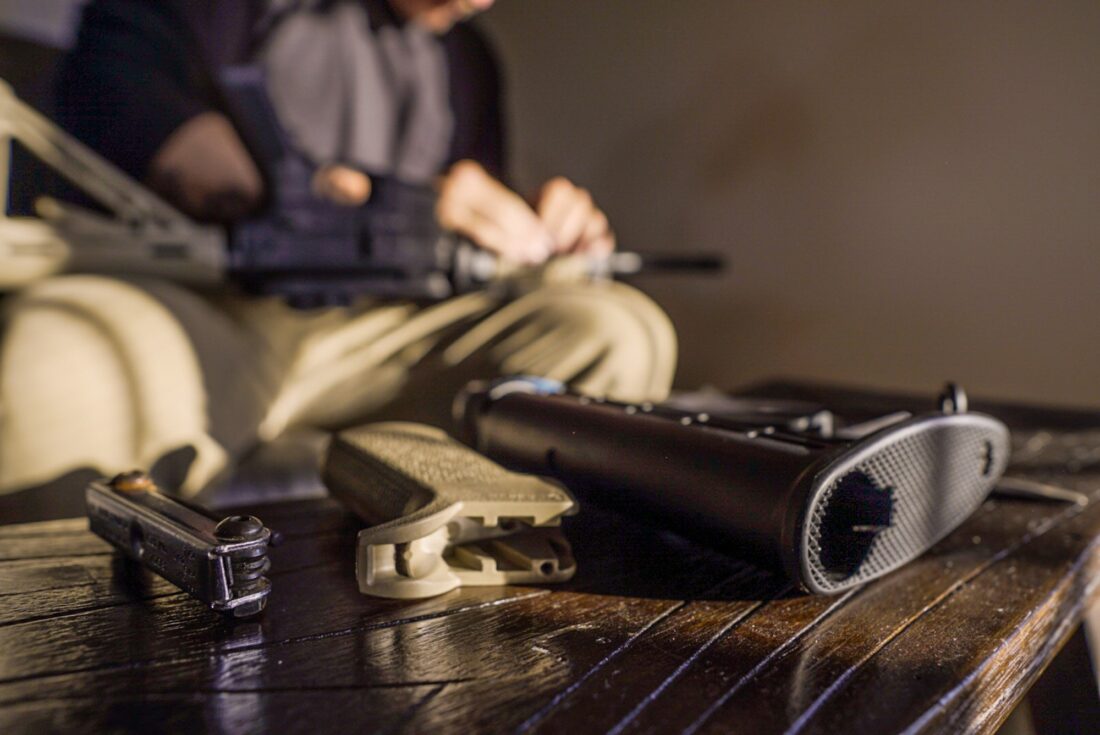Gun Maintenance: How to Take Care of Your Firearms

Yes, firearms can keep you safe from harm, but they can pose a danger, too. This is especially true without proper gun maintenance. It can lead to malfunctions or worse, accidental gun deaths or injuries.
Learning how to take care of your gun is one of the basic things to know when owning one. If you’re lost, however, we’ll teach you. Keep on reading to learn the proper steps in taking care of your gun.
-
Table of Contents
Treat It as If It’s Loaded
You may have already heard this advice a hundred times, but that’s not nearly enough. It’s the first and most important rule of owning and maintaining a gun.
Always treat your gun as if it’s loaded. Even when you know it’s not, you’re wrong. Make sure the safety is on, but still treat it as if it can fire on you.
Whenever you inspect it or clean it, point it downward at all times. Never point it on yourself or another person.
Better yet, unload it right away before you do anything else. Then, disassemble it according to the manual.
-
Practice Safety Precautions
And while we’re on the subject of safety, use gloves and eye protection when dealing with solvents and chemicals. You might have to use dangerous substances while cleaning your gun.
If you’re cleaning the gun, choose a safe working area — somewhere well-lit and well-ventilated. Your garage or anywhere outdoors will do. You should have as much space as you need, but avoid working in a high-traffic area.
If you have no choice but to do it indoors, make sure there’s a window nearby. Look for a table with ample space, and make sure it’s not something where people eat or drink out of. That means your dining room table is out of the question.
As an extra precaution, remove all ammunition in the area. Store them in a safe or move them to another room, where they’re safe.
-
Use the Right Products for Cleaning
To find the best product for your gun, consult other gun owners, or look for recommendations on the internet. Check blogs about firearms or participate in forums to get relevant suggestions.
You might have to do some trial and errors to find out which works best for you, though. Your experience might not necessarily mirror others’ experiences with a product.
Whatever you do, use products designed for guns. Keep in mind CLP, which stands for clean, lubricate, and protect.
For cleaning, use solvents, which break down carbon and copper. For lubricating, use lubricants that make the guns move more smoothly, resulting in less wear. Mixtures for protection prevent corrosion.
No, your vegetable oil, WD-40, or transmission fluid isn’t good enough for your gun. They might cause damage as they’re not intended for the materials of the gun.
Guns today utilize different materials so make sure you only use the right cleaning products.
Cleaning Kit
Aside from solutions, you also need cleaning tools. In general, you’ll need:
- Cleaning rod
- Bore brush
- Bore snake
- Cleaning jag
- Cleaning swag
- Cleaning patches
- Cotton swabs
- Utility brushes
- Luster cloth
Keep in mind that some of these tools should be specific to your model. When in doubt, buy a caliber-specific kit. This will already contain most or all of the tools above.
Some things that might also help you are drip pans and a rubber mat.
-
Clean Your Firearms at Regular Intervals
Regular cleaning is a must in firearm maintenance, even if you haven’t used it at all. That’s because they still accumulate debris and develop corrosion. If you carry the gun with you everywhere, they’re more likely to get dirty.
Inspect your firearms at least once a week. For a carry gun, examine it every day.
This is important when you want to use your gun at a moment’s notice – say, in a life-threatening situation. Around 48% of gun owners have a gun for self-defense, anyway. In that case, your gun should always be ready to go.
Avoiding cleaning because you’re not using it might result in unseen damage. That’s why it’s important to at least take a close look at your gun at least once a week.
Then, schedule a general cleaning and deep cleaning once in a while. This will depend on how much you use it.
Hunting Firearms
Many gun owners suggest cleaning your gun right after using it. Each time you shoot, residue piles up inside. Then you also have the dirt from the environment and your fingers.
You might also have to clean it even without firing it for the simple reason that you brought it out. This happens when you bring it out to hunt, for example, where there’s high humidity, damp surroundings, rain, or snow.
Why? Because the moisture will seep into your gun, which will cause rust and corrosion.
Everyday Carry Guns
Guns you carry will need cleaning more often, especially if its purpose is for protection. This also applies to any firearm in your house with the same purpose.
An ideal cleaning schedule is every two weeks. For a full breakdown, at least once a month is necessary.
Aside from cleaning, don’t forget to test the gun now and then, too. The integrity of your gun isn’t the only thing important when protecting yourself or a loved one. You also have to keep your senses sharp.
For that reason, you should practice and shoot drills or go to a local range to keep yourself acquainted with handling a gun. Then, don’t forget to clean your gun after every trip.
Guns in Storage
What about guns in storage? Those that you don’t use at all?
Like we said before, dust and moisture can still accumulate even if you have the best gun storage in the world. Any residue from improper cleaning in the past will also amplify with time.
Inspect your guns at least once a month to see if they’re still doing okay. Then, clean them once every quarter or at least twice a year.
This will ensure they’re still usable by the time you need them.
-
Learn Proper Gun Maintenance by Cleaning
That said, let’s move on to the actual cleaning process of your gun. This will depend on the model of your gun; check the manufacturer manual if you don’t know where to start. You can also read instructions online or watch YouTube videos.
The basic steps, however, are as follows:
Clean the Parts
Disassemble your gun in partial or in full, first. Whichever type of gun you have, you have to clean the barrel, including those from JP Enterprises.
We’ll clean the barrel first with a bore brush attached to a cleaning rod. After an initial scrub, add a solvent to the brush and then scrub the barrel again.
Then, replace the bore brush with a patch holder for cleaning the barrel again. Keep using and running new patch holders through the barrel until one comes out clean. For revolvers, you’ll also have to clean the chambers.
The action needs some cleaning, too. Use an action cleaner solvent to spray it, allowing carbon and debris to go into the drip pan. Let it dry in full.
For the magazines, you need to use special-purpose brushes. You also have to take extra care when handling them as they’re spring-loaded.
Lubricate After Cleaning
Apply a light lubricant to the bore to further treat it against corrosion. Heavy lubricants are for long-term storage only, and you must remove them before using the gun.
Apply lubricant to the action, slide assembly, and exterior of the barrel, as well. Follow the manufacturer’s instructions to determine the lubricant points.
The important thing to remember about lubricants is that you should never use too much. One drop is almost always enough.
Remember to not lubricate the magazines, though.
Protect the Gun
As the last step in gun maintenance, it’s time to apply protection. Before that, though, reassemble the gun and do a functional check. If it’s still working as intended, proceed.
Get your protectant and rub your gun with it; again, don’t use too much. Wipe the gun after application to remove excess product.
The right protectant for your gun depends on how much protection it needs. In places with high humidity, for example, your gun needs better protection. The same goes for when you bring your gun near saltwater on occasion.
-
Choose a Safe and Secure Storage Location
After maintaining your gun, you need to store it away. If you carry it every day, put it in the holster.
For guns kept in inconspicuous places in your house, put them in gun socks or gun cases to protect the surface. Don’t place them inside things that absorb moisture, like fabrics and cardboard boxes.
For long-term storage, a gun safe is your best bet. You only have to make sure it won’t accumulate too much moisture in the air by placing silica gels or a dehumidifier.
The most important thing to remember, though, is that the gun must be out of reach of children.
Keep Learning About Proper Gun Maintenance
If you only have one gun, gun maintenance shouldn’t take too much out of your time. If you have different varieties, though, you’ll have to learn how to take care of each one of them.
Maintenance is only the start, however. Learn more about handling your guns and buying more for your collection by reading more of our blog posts today.









